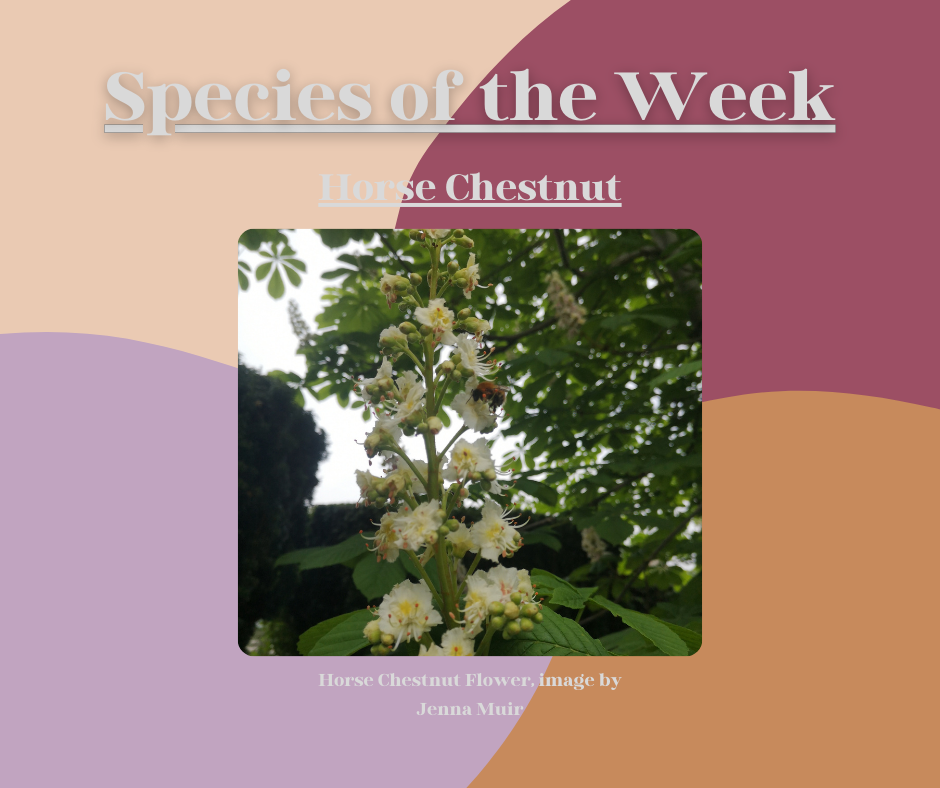Horse Chestnut
Info - Native to Greece and Albania, the Horse Chestnut Tree was brought to the UK in the 17th century where it has since become a naturalised species. Standing up to 40m tall and reaching ages of 200+ years, the Horse Chestnut certainly makes a statement. To identify this species be on the look out for it's large toothed leaves with 5-7 points on each, the cone shaped flowers it blooms in May, followed by "conkers" in August and September.
When and where to see - All year round in gardens, parks and street edges.
Fact - The flowers at the top of the "cone" are male whilst the ones at the bottom are female, and in the middle is a mix of the 2. These flowers are great for pollinators. The Horse Chestnut is not related to the "Sweet Chestnut" and should not be ingested due to it's toxicity in both humans and many other animals.

Access key details
| 1 | Home page |
| 2 | What's new |
| 4 | Search |
| 9 | Feedback form |
| 0 | Access key details |
Please log into your account
Please login to claim this listing
Sorry - the details entered are not recognised
Please double check you have verified your email if registering for the first time. If you have then please try resetting your password. As a last resort please clear your cache and try again (Chrome, Firefox, Edge, Safari).
